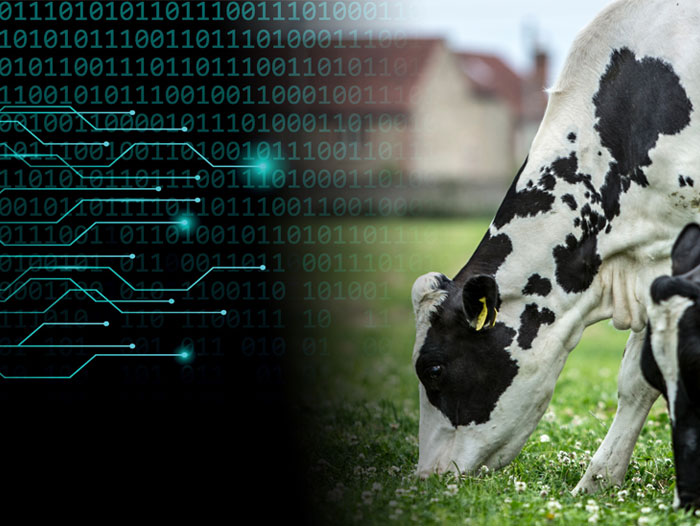New Artificial Intelligence Tool Predicts How Much Milk 1.5 Million Cows Will Produce
June 17, 2019 | 3 min to read

Arla Foods has developed a new artificial intelligence tool to better predict their milk intake from farmer-owners. This means that 200 million kilos of milk can now be utilised better each year making Arla’s value chain even more sustainable.
Every year, Arla collects around 13 billion kilos of milk from their 10,300 farmer-owners across Northern Europe. To transform as much as possible into healthy and more sustainable dairy products, the cooperative is keeping a close eye on emerging technologies that can make the dairy production even more efficient.
Most recently, Arla has developed a tool that uses artificial intelligence (AI) to predict how much milk 1,5 million cows will produce in the future. Before, this kind of forecast took days to create and arose manually from piles of Excel sheets. But with the new tool, it only takes a few hours and the forecast comes out 1,4 per cent more accurate.
“The better we are at predicting what our milk intake will be, the better we can plan and optimise our entire value chain, which both improves profitability for our farmer-owners and drives sustainability. The new AI tool provides us with an insight into our supply of milk that we have never had before”, says Michael Bøgh Linde Vinther, who is Director of Global Milk Planning in Arla.
The improved milk intake forecast means that 200 million kilos of milk can be utilised better each year.
More data drives better decision making
By using AI technology, Arla is able to create the milk intake forecast from a much richer data foundation. It includes things like seasonal changes, the number of farmers converting to new milk types, the farmers’ geographical characteristics as well as how much milk they produce on a daily basis.
This means that Michael and his colleagues can handle the milk planning at a more detailed level than they could before.
“We are now able to make important strategic decisions on a more informed basis. The data has become more valid as it is now formalised in a bulletproof system rather than based on individual knowledge. It’s amazing to see how this new technology is able to optimise and improve a, up until now, very time-consuming task”, he says.
For example, it is now possible to make the distinction between how much milk should be collected from farmers in North Germany and West Germany three to five months ahead of time.
“This kind of knowledge is very valuable, as it makes us able to plan and adjust the number of Arla trucks travelling across the country. In that way, we can both reduce cost and save the environment for unnecessary CO2 emissions”, Michael explains.
The new milk intake forecasting tool is implemented in all Arla’s markets across Europe, including Denmark, Germany, Sweden, the UK, Belgium, Luxembourg and the Netherlands.
Arla Foods is an international dairy company owned by 10,300 farmers from Denmark, Sweden, the UK, Germany, Belgium, Luxembourg and the Netherlands. Arla Foods is one of the leading players in the international dairy arena with well-known brands like Arla®, Lurpak®, Puck® and Castello®. Arla Foods is focused on providing good dairy nourishment from sustainable farming and operations and is also the world’s largest manufacturer of organic dairy products.
